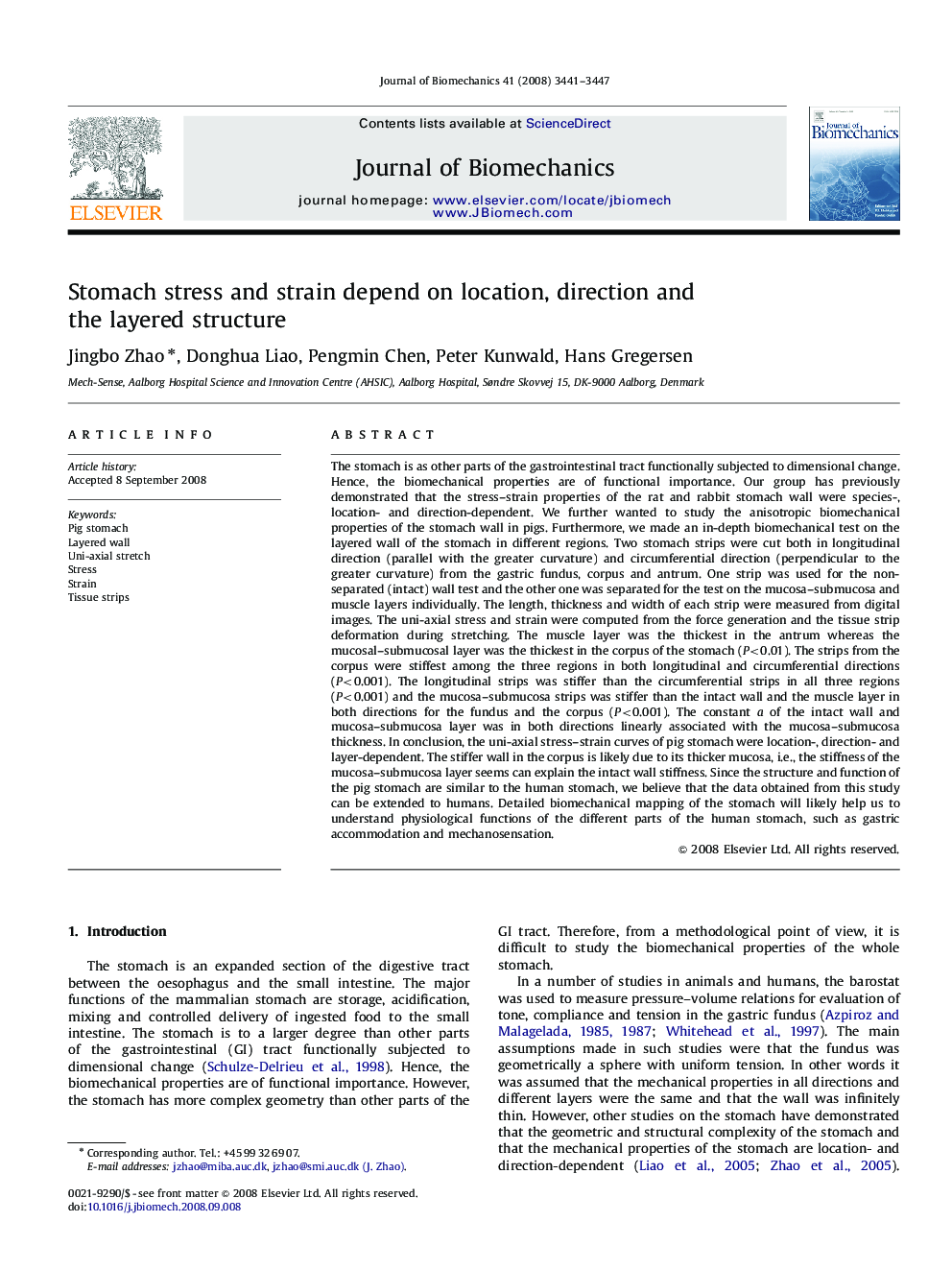| کد مقاله | کد نشریه | سال انتشار | مقاله انگلیسی | نسخه تمام متن |
|---|---|---|---|---|
| 874725 | 910347 | 2008 | 7 صفحه PDF | دانلود رایگان |

The stomach is as other parts of the gastrointestinal tract functionally subjected to dimensional change. Hence, the biomechanical properties are of functional importance. Our group has previously demonstrated that the stress–strain properties of the rat and rabbit stomach wall were species-, location- and direction-dependent. We further wanted to study the anisotropic biomechanical properties of the stomach wall in pigs. Furthermore, we made an in-depth biomechanical test on the layered wall of the stomach in different regions. Two stomach strips were cut both in longitudinal direction (parallel with the greater curvature) and circumferential direction (perpendicular to the greater curvature) from the gastric fundus, corpus and antrum. One strip was used for the non-separated (intact) wall test and the other one was separated for the test on the mucosa–submucosa and muscle layers individually. The length, thickness and width of each strip were measured from digital images. The uni-axial stress and strain were computed from the force generation and the tissue strip deformation during stretching. The muscle layer was the thickest in the antrum whereas the mucosal–submucosal layer was the thickest in the corpus of the stomach (P<0.01). The strips from the corpus were stiffest among the three regions in both longitudinal and circumferential directions (P<0.001). The longitudinal strips was stiffer than the circumferential strips in all three regions (P<0.001) and the mucosa–submucosa strips was stiffer than the intact wall and the muscle layer in both directions for the fundus and the corpus (P<0.001). The constant a of the intact wall and mucosa–submucosa layer was in both directions linearly associated with the mucosa–submucosa thickness. In conclusion, the uni-axial stress–strain curves of pig stomach were location-, direction- and layer-dependent. The stiffer wall in the corpus is likely due to its thicker mucosa, i.e., the stiffness of the mucosa–submucosa layer seems can explain the intact wall stiffness. Since the structure and function of the pig stomach are similar to the human stomach, we believe that the data obtained from this study can be extended to humans. Detailed biomechanical mapping of the stomach will likely help us to understand physiological functions of the different parts of the human stomach, such as gastric accommodation and mechanosensation.
Journal: Journal of Biomechanics - Volume 41, Issue 16, 5 December 2008, Pages 3441–3447